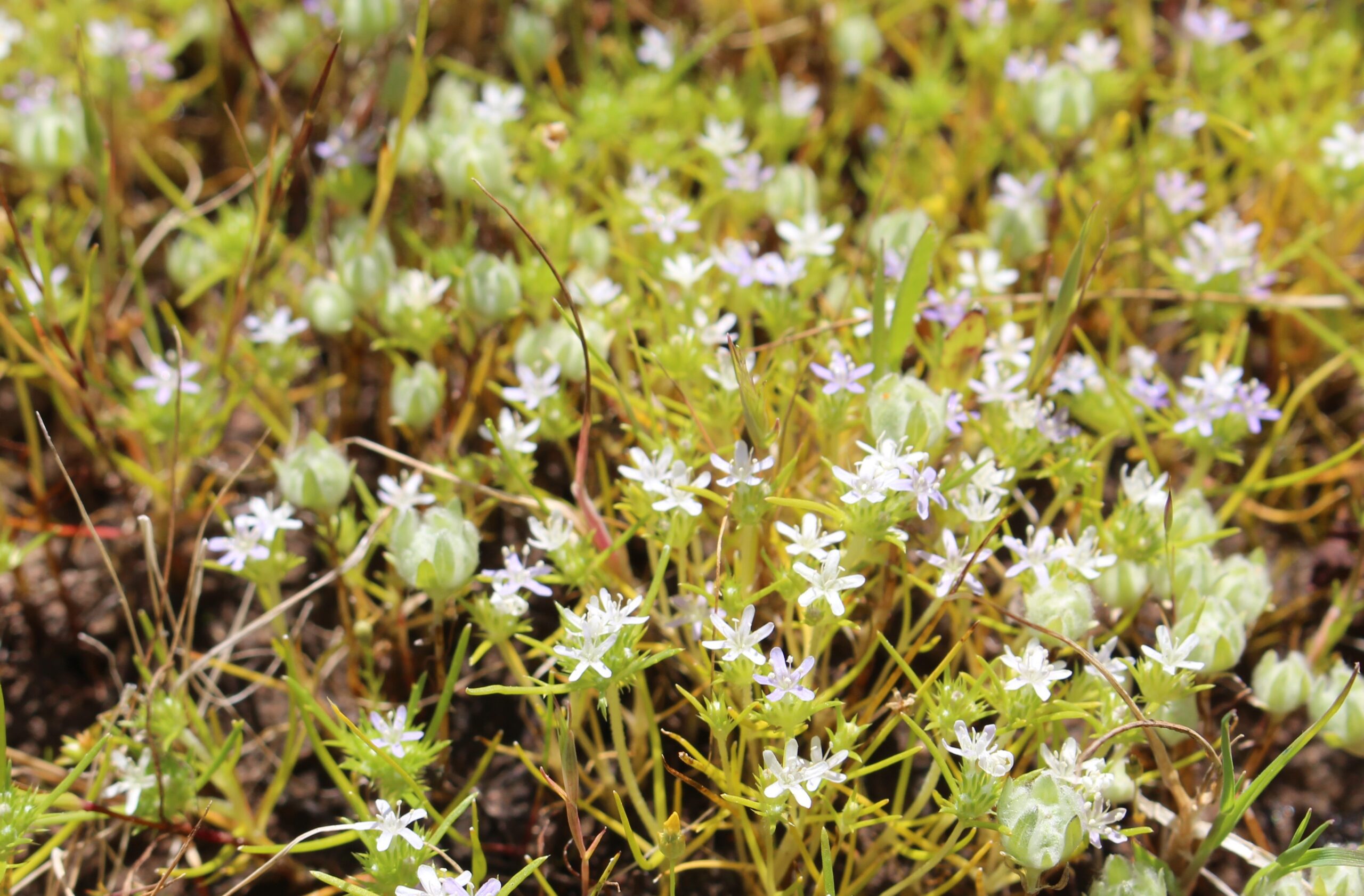“The property is very significant for protecting Napa’s rare biodiversity,” said Parker, “and it is also in a key location, very close to the 2,300-acre Walt Ranch, protected last year, and to our 1,380-acre Sutro Preserve. Protecting Mead Ranch is a key step in a large-scale effort to create a continuous corridor of protected land running along the entire length of the ridge above the east side of Napa Valley, from Robert Louis Stevenson State Park to American Canyon.”

Map of Mead Ranch and surrounding protected lands.
A large number of rare plant species are found on the property, including a new species that was discovered and named after the Mead family, Mead’s Owl’s Clover (Castilleja ambigua var. meadii), a wildflower found only on Mead Ranch, and one nearby property, nowhere else in the world! The Few-flowered Navarretia (Navarretia leucocephala ssp. pauciflora), is a Federally listed endangered species also found on the property and is only known to exist in Lake and Napa Counties. In addition, the property has several other rare species: Napa Bluecurls (Trichostema ruygtii), another new species that was identified based on the Mead Ranch population; and Holly-leaved Ceanothus (Ceanothus purpureus) and Narrow-anthered Brodiaea (Brodiaea leptandra), both recognized as Endangered by the California Native Plant Society.
In addition, the property includes an extensive set of vernal pools that are the most species-diverse of any remaining pool systems in the county, according to Jake Ruygt, a botanist who has worked extensively in Napa County and who discovered Mead’s Owl’s Clover.
Running along the ridge above Yountville, the property offers expansive views across Napa Valley and on to San Francisco.
In a review of her poetry for the LA Review of Books, Carol Muske-Dukes, professor of English and Creative Writing at USC, said, “Beyond her tenured years as poet-in-residence at Wake Forest University and her occasional teaching semester at the Iowa Writers’ Workshop in Iowa City (where she also co-owned Prairie Lights Bookstore) — and beyond her many major awards and acknowledgments — Mead Ranch remained at the heart of her experience as a poet…”
Soon after Jane was diagnosed with cancer, she decided to protect the property in perpetuity. “She wanted to protect the rare species it harbors and its role within a wildlife corridor,” said Parker. “She also hoped the property could provide opportunities for future generations, particularly for children, to learn about these natural values and the importance of protecting them.”
One of Jane Mead’s poems, published in The New Yorker, refers to her feelings for the land:
The poem begins:
I wonder if I will miss the moss
after I fly off as much as I miss it now
just thinking about leaving.
And closes:
Whenever the experiment on and of
my life begins to draw to a close
I’ll go back to the place that held me
and be held. It’s O.K. I think
I did what I could. I think
I sang some, I think I held my hand out.
Read the Napa Register full story here.

View across Napa Valley from Mead Ranch to Mount Tam in the distance.

Few-flowered Navarretia (Navarretia leucocephala ssp. pauciflora) – a Federally listed endangered species

Mead’s Owl’s Clover (Castilleja ambigua var. meadii), a wildflower found only on Mead Ranch, and one nearby property, nowhere else

Holly-leaved Ceanothus (Ceanothus purpureus) recognized as Endangered by the California Native Plant Society

Vernal pools and views of Mead Ranch

